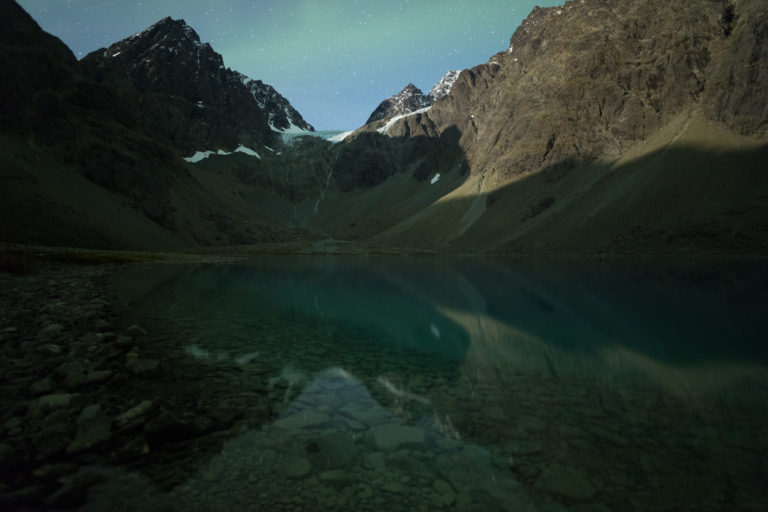An experienced local boatman pilots a long, slim riverboat up the river. Banks of birch, alder and aspen slowly give way to dense pine forest. The occasional tent is pitched beside a boat pulled up onto the bank, as this is salmon season and the fishermen need a siesta at midday. The landscape gradually becomes wilder, and the steep cliffs crowd closer to the river, turning the valley into a narrow canyon. Shining ribbons of water stream over the bare rock and cascade down rugged scree.
The river boats are sturdy
One minute the boat is in centre-stream, the next it has swerved to the bank, causing its passengers to duck below low birch branches. Sometimes the river splits into several channels, at other times it is half-blocked by banks of pebbles and, in places, large boulders lurk just below the surface. The water abruptly turns choppy over some rapids, then just as quickly runs calm again. Sometimes you think the boat has run aground, but the boatman knows this river like the back of his hand, and he always picks the safest route.
The roar from the waterfall is deafening
Even from the river, you can see the waterfall plunging down the cliff. You jump ashore and walk through the forest towards the loud rumble, catching glimpses of its white waters between the birch leaves. Then it’s revealed in all its majesty, across a meadow filled with wild flowers. The sight is overwhelming — words can’t describe it. Which is just as well, as you can barely hear a word over the roaring water.
The waterfall’s mist sparkles in the sunlight
Up close, you look down into the pool beneath the falls, where a rainbow rises out of the misty spray. The water plunging into the pool creates a wind that sweeps up the knoll on the opposite side, laden with spray that sparkles in the sunlight. Naturally, you have to take photos, but your gaze keeps returning to the mass of water pouring over the ravine at the top. Afterwards, you have coffee round the camp fire, awed by what you have seen.
Mollisfossen is a remote tourist destination
Mollisfossen, Sami Mollešgorži, has a fall of 269 metres (883 feet), of which 140 metres (459 feet) is free falling. The waterfall is on the Mollešjohka river, just before this runs into the River Reisa. It is the highest waterfall in Northern Norway, and one of the most beautiful in the country. It is so remote that few people visit it, but there are regular riverboat trips there in the summer, taking about an hour each way, plus a break at the falls while the boatman brews coffee on a camp fire beside the riverbank.
The waterfall is a gateway to the wilderness
Mollisfossen marks the start of the Reisa National Park, a huge untouched wilderness that covers the whole inner part of Nordreisa, and parts of Kautokeino municipality in Finnmark. Mountain-lovers disappear for days on end on trips that culminate in Kautokeino or Kilpisjärvi in Finland; this area offers fantastic hiking trips for only the fit, experienced and well-equipped. However, shorter trips to places like the Nedrefoss cabin or Imofossen waterfalls are within the average person’s reach, although you have to arrange to be picked up by the local river boat companies. It is also possible to haul a canoe upriver and paddle back down. The River Reisa is one of Norway’s best salmon rivers, and you can catch sea trout here too. As you would expect, anglers also make use of the riverboats.
Everyone can visit Mollisfossen
A boat trip to Mollisfossen waterfall is not strenuous. It is only a few minutes’ walk to the waterfall, so children, older people and many disabled people can manage it — it is a unique opportunity to experience untouched wilderness. It takes less than an hour to drive up from the municipal centre of Storslett past the villages of the Reisa valley to Bilto and Saraelv, where the road ends and the wilderness takes over.
Good to know about the Mollisfossen waterfall
There are a couple of companies offering tours, either just to the waterfall or including other beautiful spots in the area. Have a look at the website of Visit Lyngenfjord, the local visitor’s organisation.
Mollisfossen, which is a Norwegian adaptation of the Sami name Mollešgorži, is found in valley of Reisadalen, at the entrance to the Reisa Nasjonalpark (National Park). All this is in the Lyngenfjord area, between Tromsø and Alta in Northern Norway.
Mollisfossen cannot be reached by road, you have to use a riverboat to get there. The nearest larger village is Storslett, found on the E6. From there, you follow the road 865 up to Bilto/Saraelv. From here, the tour companies start their tours up to Mollisfossen. You will mostly need your own transport to get there, as there are very few buses up the valley.
There are several options in the valley, ranging from luxury to budget. At Sørkjosen, near Storslett there is a hotel. The full overview, however, is to be had at Visit Lyngenfjord, the visitor’s organisation of the area.
Yes, the riverboat companies only go up if it’s safe. In early summer, tours might be cancelled because of flooding caused by snowmelting. In late summer, droughts can make the river too shallow. In both cases, tours will be cancelled.
The spectacular water is a fantastic sight in winter, when it’s frozen. However, since the river is frozen too, you can only get there by dog sledding or on skis. Both options should be discussed with Visit Lyngenfjord. Don’t do this alone.


















